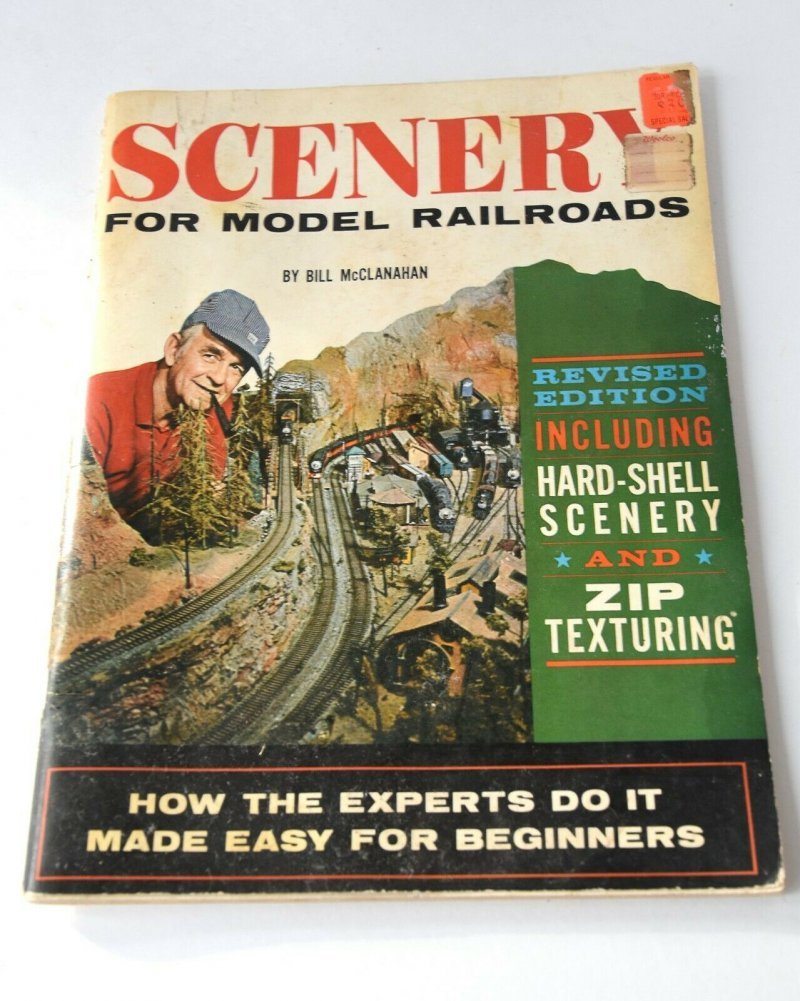
Bill McClanahan's Scenery for Model Railroads, at first glance seems like it would be a bit lightweight, it's in Kalambach's magazine type format, with a whiff of old comic books about it. One would be wrong, however. This is a dense and worthy tome of model making information. I learned more about my mistakes from it than from years of hands on plaster working. Of course that might just mean I'm a slow learner, but honestly, this is a cheap book for the quality of knowledge it contains. It's easy to find, and never very expensive. I spent 6 dollars with shipping on my copy, it's worth three times that easily. It has excellent material on cheap ways of scenery making; techniques that rely on inexpensive materials; casting plaster, hydrocal, paper mache (and two or three excellent techniques for making superior paper mache) fabulous information on the best methods of mixing and laying plaster. There is even a table explaing the kinds of plasters available and their varying qualities.
There are a half dozen varying ways to create water scenes to suit every budget, lots of NON-RESIN techinques, and even some pointers for using clear silicone (like resin, a new and rare material when this was written). as well as some very old hollywood tricks, like tinting sheet glass and laying it over a scenic lakebed.
In addition there are primers on how to model geographically accurate scenes, how to observe landforms, and making various needful right of way things like culverts, ditches, drains, bridges, as well as great advice on how to color scenery properly; with both oil and water based colors. It's a bit spare about acrylics though, they were new when this was written.
The section on making trees is enlightening, with clear pointers on what to ask for at florists shops for various excellent scale ferns and foliages, and how to scrounge your own, plus how to infuse lichen and twigs with gycerin to keep them from going brittle. the scrounging section is not useless, however it's not very useful because the writer lives in the desert southwest, and sagebrush is uncommon in Alaska. He offers some alternatives that would be useful in Georgia or Pennsylvania however.
this is a book by people who have a lot of hands on experience with a wide range of inexpensive materials, written for people who haven't used any before. It's now one of my favorite shop books.
